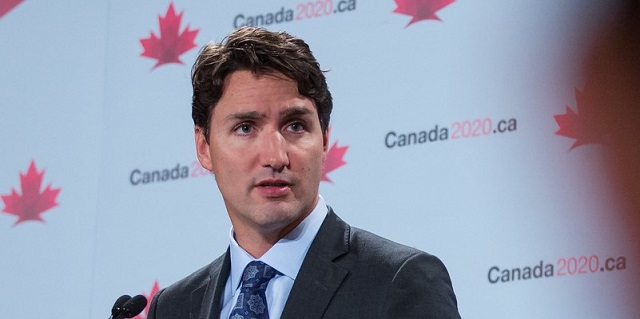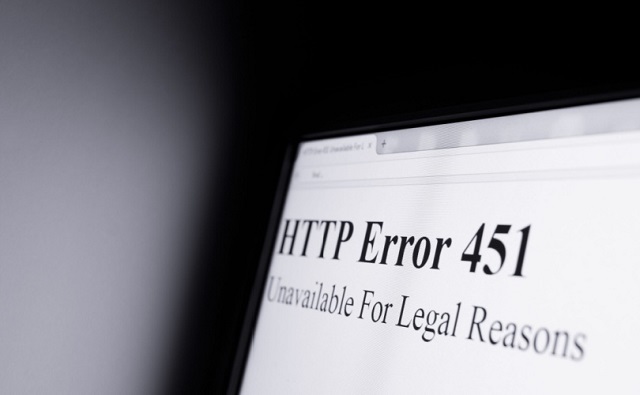Business
Government laws designed to rescue Canadian media have done the opposite

From the MacDonald-Laurier Institute
This article first appeared as the cover story to our September 2023 issue of Inside Policy. You can download the full issue here.
By Peter Menzies, October 4, 2023
The federal government has made a regulatory mess with wrongheaded legislation targeting digital media content.
Few things are more fundamental to a nation’s economic prosperity and social cohesion than a robust communications framework.
Canada has its challenges in terms of rural and northern internet and mobile connectivity, but the nation’s overall communications mainframe is, by most international measures, in good shape. The rest of the story involving what gets carried on the mainframe (i.e., the actual content) isn’t as pretty. In fact, two recent communications policy initiatives proposed by the federal government have put tens of thousands of jobs at risk in the creative and news industries.
Money goes where it is likely to generate profit, and if some key arteries aren’t unclogged quickly, the flow of communications investment dollars in Canada could seize up. Worse, the future of what has been a thriving creative economy, driven by independent content creators, is now uncertain.
Meanwhile, the news industry is on the cusp of becoming permanently reliant on government subsidies – a dependency that’s certain to undermine the public’s already wavering trust in its independence.
But first, the good news. While measures vary by source and date, Canada consistently ranks among the world’s top 20 nations when it comes to fixed broadband connectivity, and as high as No. 1 in the world when it comes to mobile internet capacity. Given that most of nations in the top ten for broadband connectivity are smaller in landmass than Prince Edward Island, this is a considerable achievement for a country the size of Canada. This connectivity, however, has come at a premium – consumer in this country are historically among those paying the highest rates anywhere in the world, particularly when it comes to mobile plans. Costs to consumers remain high but have been trending downward in recent years as carriers shift strategic priorities from acquiring new consumers to retaining existing ones.
Far more challenging is a regulatory environment that is less than friendly when it comes to attracting private investment. The Canadian Radio-television and Telecommunications Commission (CRTC) has been risk-averse in its dealings with Mobile Virtual Network Operators (MVNOs) and smaller Internet Service Providers (ISPs) looking for competitive access rates to incumbent networks. Still, competition is one area that appears to be a priority for the CRTC. The regulator’s new chair, Vicky Eatrides, has a background in competition policy; a new vice chair, Adam Scott, is thoroughly familiar with the Telecom industrial framework; and the new Ontario Regional Commissioner, Bram Abramson, has experience as a regulatory officer for a smaller telco. (Abramson’s former employer, TekSavvy Solutions, recently waved the white flag in its efforts to compete in the Canadian market and put itself up for sale.)
Now the bad news – and, fair warning, there’s a lot of it.
Canada is aggressively regulating the internet – not in priority areas such as privacy, algorithms and data collection, but in terms of its content and its users’ freedom of navigation. The Online Streaming Act (Bill C-11) came into force in the spring, amending the Broadcasting Act to define the internet’s audio and video content as “broadcasting” and, as such, placing all this content under the authority of the CRTC. The goals remain the same as they did during the broadcast radio and cable television world of the early 1990s: the funding of certified TV and film properties, ensuring Canadian content (CanCon) gets priority over foreign programming and ensuring designated groups – BIPOC and LGBTQ2S, among other acronyms – and official language minorities are represented. How exactly the CRTC intends to achieve this without disrupting what has been a booming decade for film and television production in a freewheeling global market remains to be seen. As does how it will give its supply-managed content priority without imposing economic harm on the 100,000 Canadians who earn a living in the unlicensed, uncertified world of YouTube and other major streaming platforms.
While the CRTC has promised to provide at least preliminary answers to these questions by the end of next year, years of regulatory haggling and court challenges await and the regulator’s reputation for the timely resolution of matters is spotty at best. As of September 22, for instance, it still hadn’t dealt with a cabinet order to review its CBC licensing decision; a decision which, itself, which took 18 months for the regulator to reach (following a January 2021 hearing that was held three years after the term of the CBC’s previous license had expired). Regulatory sloth of this nature on a routine matter does not inspire much optimism for the expedient handling of the far more complex issue of online streaming.
Indeed, the burden of the Online Streaming Act has already overwhelmed the CRTC’s administrative capacities. In August, it autorenewed the licenses of 343 television channels, discretionary services, and cable and satellite services for two to three years each. It subsequently announced it wouldn’t be dealing with any radio matters at all for “at least” two years. It even nervously punted a demand for the cancellation of Fox News’ Canadian carriage into the future by declaring it necessary to re-do the entire framework involving cable carriage of foreign television channels. It has clearly signaled that it plans to manage nothing other than telecom and Online Streaming Act issues for years to come. Everything else is on hold until such time comes to initiate a catch-up process that, in turn, will itself take years to clear the logjam. All this at a time of significant disruption that demands corporate and regulatory nimbleness.
But even what appears to be catastrophic regulatory arrest pales in comparison to the impact of the federal government’s second significant piece of new internet legislation: the Online News Act. Rarely has legislation designed to assist a sector – news production – been so poorly constructed that it has managed to make everything worse for everyone involved.
Based on the unproven premise that Big Tech companies were profiting from “stealing” content from news organizations, the Act was designed to force Meta (Facebook’s parent company) and Google to redistribute their considerable advertising revenue to those who used to receive the lion’s share of this revenue – newspapers and broadcasters. From the beginning, Meta indicated that the premise and the cost of the legislation, unless amended, would force it to cease the carriage of links to news stories and suspend its existing support programs for Canadian journalism.
The government and the news industry lobbyists who backed the bill grossly overestimated their economic value to Meta and insisted the tech giant was bluffing. Last week, however, Brian Myles, Director of Le Devoir, told an online panel hosted by the Canadian Journalism Foundation that it was clear Meta wasn’t bluffing and, going forward, news organizations would have to adapt to its exit from the market and the considerable financial impact it will have on their industry. He nevertheless held out hope that a rapprochement of some kind might still be possible with Google.
Like Meta, Google has indicated that it, too, will suspend both news linkage and its current partnerships with Canadian news organizations, unless the federal government can provide more economically acceptable options than what it has heretofore offered. As much financial harm as Meta’s departure will cause, there is consensus that Google’s departure – if it occurs – would be a disaster on a nuclear scale.
Even if a deal is reached, the best the news industry can hope for is that Google’s financial concessions will offset a portion of the losses suffered from losing access to Facebook, Instagram and Threads (among other Meta properties). Any money that can be squeezed out of an agreement with Google would be meaningful but a far cry from the hundreds of millions the industry was dreaming of a year ago. The largest recipients of any such windfall, of course, will be those who least need it – namely CBC and Bellmedia.
The bottom line is that, following passage the Online News Act, there will be less revenue for Canadian news organizations than there was just a few months ago. As a result, publishers are pleading for “temporary” measures such as the Journalism Labour Tax Credit and Local Journalism Initiative to be not just extended but enhanced. Up to 35 percent of legacy newsrooms costs would be covered by the federal government while, without Facebook, it will be near impossible for local news innovators outside of the legacy bubble to build audiences.
Next up is an anticipated Online Harms Act, designed to control “lawful but awful” speech through a government-appointed Digital Safety Commissioner. Expect more policy mayhem in the months to come.
Peter Menzies is a senior fellow at MLI and a former vice-chair of the CRTC.
Economy
Prime minister’s misleading capital gains video misses the point

From the Fraser Institute
By Jake Fuss and Alex Whalen
According to a 2021 study published by the Fraser Institute, 38.4 per cent of those who paid capital gains taxes in Canada earned less than $100,000 per year, and 18.3 per cent earned less than $50,000. Yet in his video, Prime Minister Trudeau claims that his capital gains tax hike will affect only the richest “0.13 per cent of Canadians”
This week, Prime Minister Trudeau released a video about his government’s decision to increase capital gains taxes. Unfortunately, he made several misleading claims while failing to acknowledge the harmful effects this tax increase will have on a broad swath of Canadians.
Right now, individuals and businesses who sell capital assets pay taxes on 50 per cent of the gain (based on their full marginal rate). Beginning on June 25, however, the Trudeau government will increase that share to 66.7 per cent for capital gains above $250,000. People with gains above that amount will again pay their full marginal rate, but now on two-thirds of the gain.
In the video, which you can view online, the prime minister claims that this tax increase will affect only the “very richest” people in Canada and will generate significant new revenue—$20 billion, according to him—to pay for social programs. But economic research and data on capital gains taxes reveal a different picture.
For starters, it simply isn’t true that capital gains taxes only affect the wealthy. Many Canadians who incur capital gains taxes, such as small business owners, may only do so once in their lifetimes.
For example, a plumber who makes $90,000 annually may choose to sell his business for $500,000 at retirement. In that year, the plumber’s income is exaggerated because it includes the capital gain rather than only his normal income. In fact, according to a 2021 study published by the Fraser Institute, 38.4 per cent of those who paid capital gains taxes in Canada earned less than $100,000 per year, and 18.3 per cent earned less than $50,000. Yet in his video, Prime Minister Trudeau claims that his capital gains tax hike will affect only the richest “0.13 per cent of Canadians” with an “average income of $1.4 million a year.”
But this is a misleading statement. Why? Because it creates a distorted view of who will pay these capital gains taxes. Many Canadians with modest annual incomes own businesses, second homes or stocks and could end up paying these higher taxes following a onetime sale where the appreciation of their asset equals at least $250,000.
Moreover, economic research finds that capital taxes remain among the most economically damaging forms of taxation precisely because they reduce the incentive to innovate and invest. By increasing them the government will deter investment in Canada and chase away capital at a time when we badly need it. Business investment, which is crucial to boost living standards and incomes for Canadians, is collapsing in Canada. This tax hike will make a bad economic situation worse.
Finally, as noted, in the video the prime minister claims that this tax increase will generate “almost $20 billion in new revenue.” But investors do not incur capital gains taxes until they sell an asset and realize a gain. A higher capital gains tax rate gives them an incentive to hold onto their investments, perhaps until the rate is reduced after a change in government. According to economists, this “lock-in” effect can stifle economic activity. The Trudeau government likely bases its “$20 billion” number on an assumption that investors will sell their assets sooner rather than later—perhaps before June 25, to take advantage of the old inclusion rate before it disappears (although because the government has not revealed exactly how the new rate will apply that seems less likely). Of course, if revenue from the tax hike does turn out to be less than anticipated, the government will incur larger budget deficits than planned and plunge us further into debt.
Contrary to Prime Minister Trudeau’s claims, raising capital gains taxes will not improve fairness. It’s bad for investment, the economy and the living standards of Canadians.
Authors:
Business
Ottawa should end war on plastics for sake of the environment

From the Fraser Institute
Here’s the shocker: Meng shows that for 15 out of the 16 uses, plastic products incur fewer GHG emissions than their alternatives…
For example, when you swap plastic grocery bags for paper, you get 80 per cent higher GHG emissions. Substituting plastic furniture for wood—50 per cent higher GHG emissions. Substitute plastic-based carpeting with wool—80 per cent higher GHG emissions.
It’s been known for years that efforts to ban plastic products—and encourage people to use alternatives such as paper, metal or glass—can backfire. By banning plastic waste and plastic products, governments lead consumers to switch to substitutes, but those substitutes, mainly bulkier and heavier paper-based products, mean more waste to manage.
Now a new study by Fanran Meng of the University of Sheffield drives the point home—plastic substitutes are not inherently better for the environment. Meng uses comprehensive life-cycle analysis to understand how plastic substitutes increase or decrease greenhouse gas (GHG) emissions by assessing the GHG emissions of 16 uses of plastics in five major plastic-using sectors: packaging, building and construction, automotive, textiles and consumer durables. These plastics, according to Meng, account for about 90 per cent of global plastic volume.
Here’s the shocker: Meng shows that for 15 out of the 16 uses, plastic products incur fewer GHG emissions than their alternatives. Read that again. When considering 90 per cent of global plastic use, alternatives to plastic lead to greater GHG emissions than the plastic products they displace. For example, when you swap plastic grocery bags for paper, you get 80 per cent higher GHG emissions. Substituting plastic furniture for wood—50 per cent higher GHG emissions. Substitute plastic-based carpeting with wool—80 per cent higher GHG emissions.
A few substitutions were GHG neutral, such as swapping plastic drinking cups and milk containers with paper alternatives. But overall, in the 13 uses where a plastic product has lower emissions than its non-plastic alternatives, the GHG emission impact is between 10 per cent and 90 per cent lower than the next-best alternatives.
Meng concludes that “Across most applications, simply switching from plastics to currently available non-plastic alternatives is not a viable solution for reducing GHG emissions. Therefore, care should be taken when formulating policies or interventions to reduce plastic demand that they result in the removal of the plastics from use rather than a switch to an alternative material” adding that “applying material substitution strategies to plastics never really makes sense.” Instead, Meng suggests that policies encouraging re-use of plastic products would more effectively reduce GHG emissions associated with plastics, which, globally, are responsible for 4.5 per cent of global emissions.
The Meng study should drive the last nail into the coffin of the war on plastics. This study shows that encouraging substitutes for plastic—a key element of the Trudeau government’s climate plan—will lead to higher GHG emissions than sticking with plastics, making it more difficult to achieve the government’s goal of making Canada a “net-zero” emitter of GHG by 2050.
Clearly, the Trudeau government should end its misguided campaign against plastic products, “single use” or otherwise. According to the evidence, plastic bans and substitution policies not only deprive Canadians of products they value (and in many cases, products that protect human health), they are bad for the environment and bad for the climate. The government should encourage Canadians to reuse their plastic products rather than replace them.
Author:
-

 espionage23 hours ago
espionage23 hours agoThe Scientists Who Came in From the Cold: Canada’s National Microbiology Laboratory Scandal, Part I
-

 Economy2 days ago
Economy2 days agoCanadians experiencing second-longest and third steepest decline in living standards in last 40 years
-

 National21 hours ago
National21 hours agoTrudeau’s internet censorship Bill C-11 will not be implemented until late 2025
-

 Great Reset2 days ago
Great Reset2 days agoBiden Administration Eager to Sign WHO Pandemic Treaty
-

 Energy2 days ago
Energy2 days agoNew Report Reveals Just How Energy Rich America Really Is
-

 Opinion2 days ago
Opinion2 days agoOrdinary working Canadians are not buying into transgender identity politics
-

 Economy2 days ago
Economy2 days agoFeds spend $3 million to fly 182 politicians and bureaucrats to climate conference
-

 Automotive2 days ago
Automotive2 days agoBiden’s Climate Agenda Is Running Headfirst Into A Wall Of His Own Making











